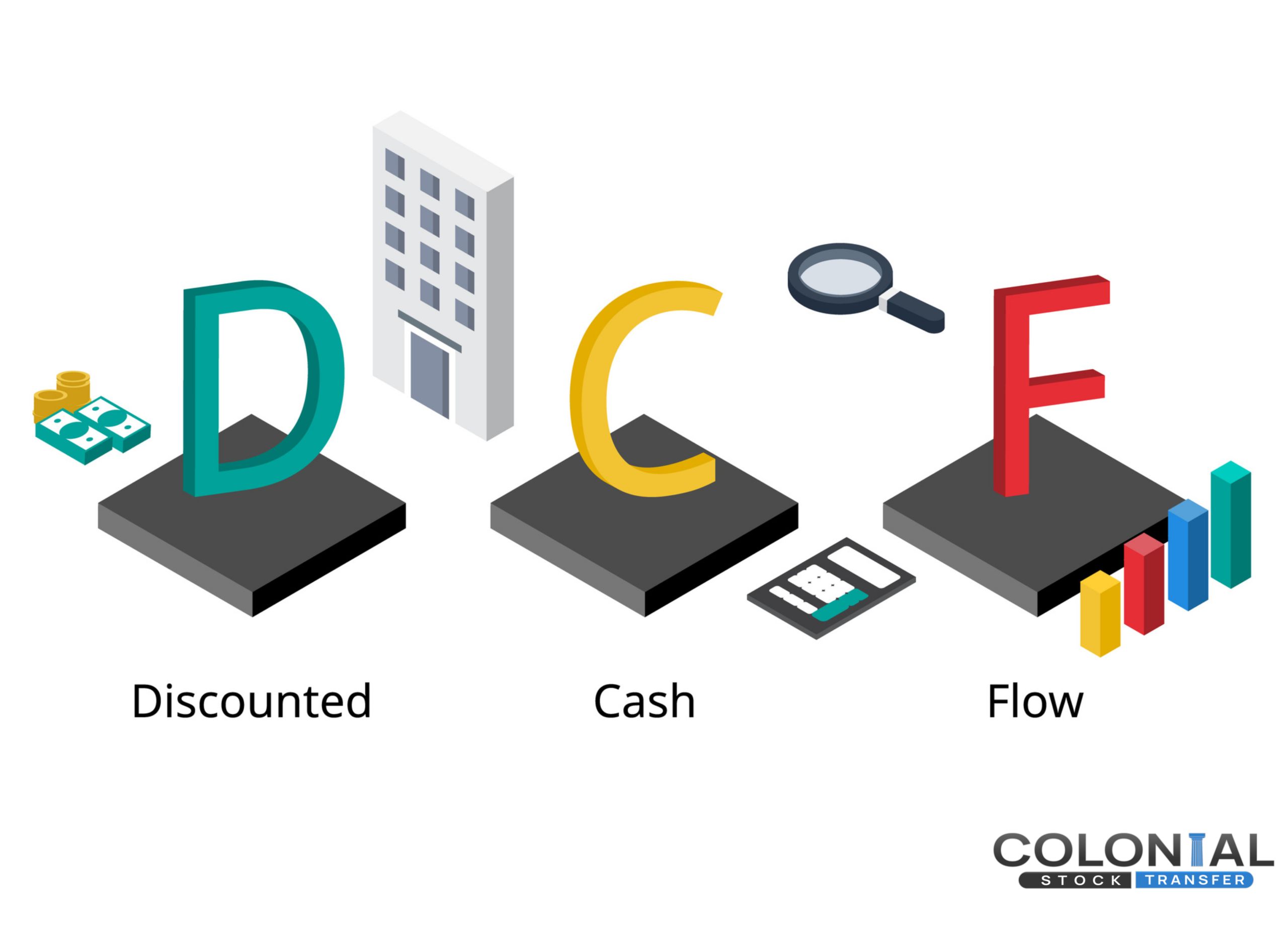
Discounted Cash Flow or DCF for short, is a means of estimating the worth of a stock or other asset in the current moment with the use of projected cash flows. DCF is important as it reveals the amount of money that can be spent on an investment in the moment to obtain the targeted return down the line. DCF is used to calculate the value of everything from a stock’s valuation to that of a piece of equipment used by a business or even the value of real estate.
Calculating Stock Valuation using Discounted Cash Flow (DCF)
The formula for calculating DCF is not as difficult to understand as many assume. The DCF formula equals the total sum of cash flow in specific periods divided by one with the addition of the discount rate, also known as WACC raised to the period number power. However, when investors and others interested in making money look at the DCF formula, they are understandably confused. The formula is as follows:
DCF = (CF/(1+r)^1)+(CF/(1+r)^2)+(CF/(1+r)^3+…+(CF/(1+r)^n)
Let’s take a look at each of the unique components of this equation to provide a better understanding:
- “CF” in the DCF formula refers to cash flow in the period in question.
- “r” letter of the formula refers to the discount rate or interest rate.
- “n” in the formula refers to the period number.
- “g” in the formula refers to the growth rate in perpetuity.
How Might a DCF Model Be Used?
A discounted cash flow model is typically seen as the gold standard when valuing privately held companies. If one company is thinking about acquiring another company, it will ask to see that company’s books. Then, it will use its revenue stream to come up with a fair valuation of the company and use that number as a driving factor when providing an offer.
At the same time, this model can be used when valuing publicly held companies as well. Publicly held companies have a P/E ratio, which is the stock price of the company divided by that company’s earnings per share, or EPS. The EPS represents the total net income of the company divided by the number of outstanding shares, or shares that have not been purchased. A P/E ratio is very easy to calculate, and it will be compared to the DCF.
Then, by comparing the P/E ratio to the DCF model, it is possible to see if a company is fairly valued.
It is also possible to use a DCF model in conjunction with WACC, another method of valuing a company. WACC is used to calculate how a company raises funds or capital. Companies can raise funds using common stock, preferred stock, long-term debt, and bonds. WACC can typically be viewed as a hurdle rate that a company needs to obtain to convince investors to provide capital for the company. If the return is less than the hurdle rate, then most investors are going to think the project is not worth pursuing.
WACC’s hurdle rate can be used as a discount rate when calculating a DCF analysis, and many analysts believe this makes the value more accurate.
Choosing the Correct Discount Rate Is Critical
If you want your DCF analysis to be accurate, you need to choose the best discount rate. This is often the trickiest part of using the formula, as there are multiple ways to do so. If you do not choose the correct discount rate, then the entire analysis can be erroneous, and it can impact future projections for your business, an offer you might make to purchase another company, or your evaluation of a company that is publicly held.
When in doubt, you need to use the WACC as the discount rate. A company is only going to be profitable if it can cover the cost of its capital, and that makes WACC a valid method of estimating the discount rate.
How Can You Use a DCF Analysis To See Whether a Company Is Fairly Valued?
One of the most common applications of a DCF analysis is to see whether a company has been fairly valued. What you should do is look up several metrics for a specific company, including:
- Market Cap
- Share Price
- Earnings Per Share
- Cash Flows
- WACC
- Annual Growth
- Projected Time Frame
Then, using all of the information above, you can calculate a hypothetical share price for the company. Once you have this number, you can compare the share price you have calculated to the actual share price of the business on the open market.
If the share price you have calculated is higher than the share price on the market, it could indicate that you have a good investment in front of you. On the other hand, if the share price you calculate is lower than the share price on the market, it could indicate that the company is overvalued.
Using a DCF Model To Value a Company: Pros and Cons
There are multiple financial models you can use to value a company, so what are some of the benefits and drawbacks of using a DCF model?
Pros
- The model is extremely detailed.
- It includes just about every major assumption about the business.
- You can use a DCF model to calculate the intrinsic value of the business.
- It does not require you to compare one company against any other company in the industry.
- You can perform this calculation using basic software programs.
- You can use it to estimate the value of public companies in addition to private companies that might be targets of mergers and acquisitions.
- You can use this model to estimate the internal rate of return on a specific investment.
Cons
- It does require you to make a lot of assumptions when calculating the value of a company.
- The model can be a bit too complex for quick calculations.
- The model itself is very sensitive to small changes in any of the assumptions.
- It does not look at the value of the company in comparison to other companies on the market.
- The terminal value of a company is very hard to estimate, and the terminal value represents a large portion of the total value.
- An accurate DCF requires an accurate WACC, which can be difficult to determine.
When Should You Use a DCF Model?
You should use a DCF model if you are confident that the assumptions that are baked into the model are correct. For example, if you feel like your estimations of future free cash flow and dividends are accurate, then that could increase the accuracy of a DCF model. Or, if you feel like you are comfortable estimating the value of a company without comparing it to other companies in the industry, then you may want to use a DCF model.
On the other hand, similar goods should sell at similar prices. Therefore, if you feel like the value of one company is way off when compared to other companies in the industry, then you may want to use a different model to estimate the value of that company. For example, you might be better off using the comparables model as a part of your calculation. You might want to use multiple methods in conjunction with one another and use them all to drive your decision-making process. Do not hesitate to reach out to an expert who can help you.




